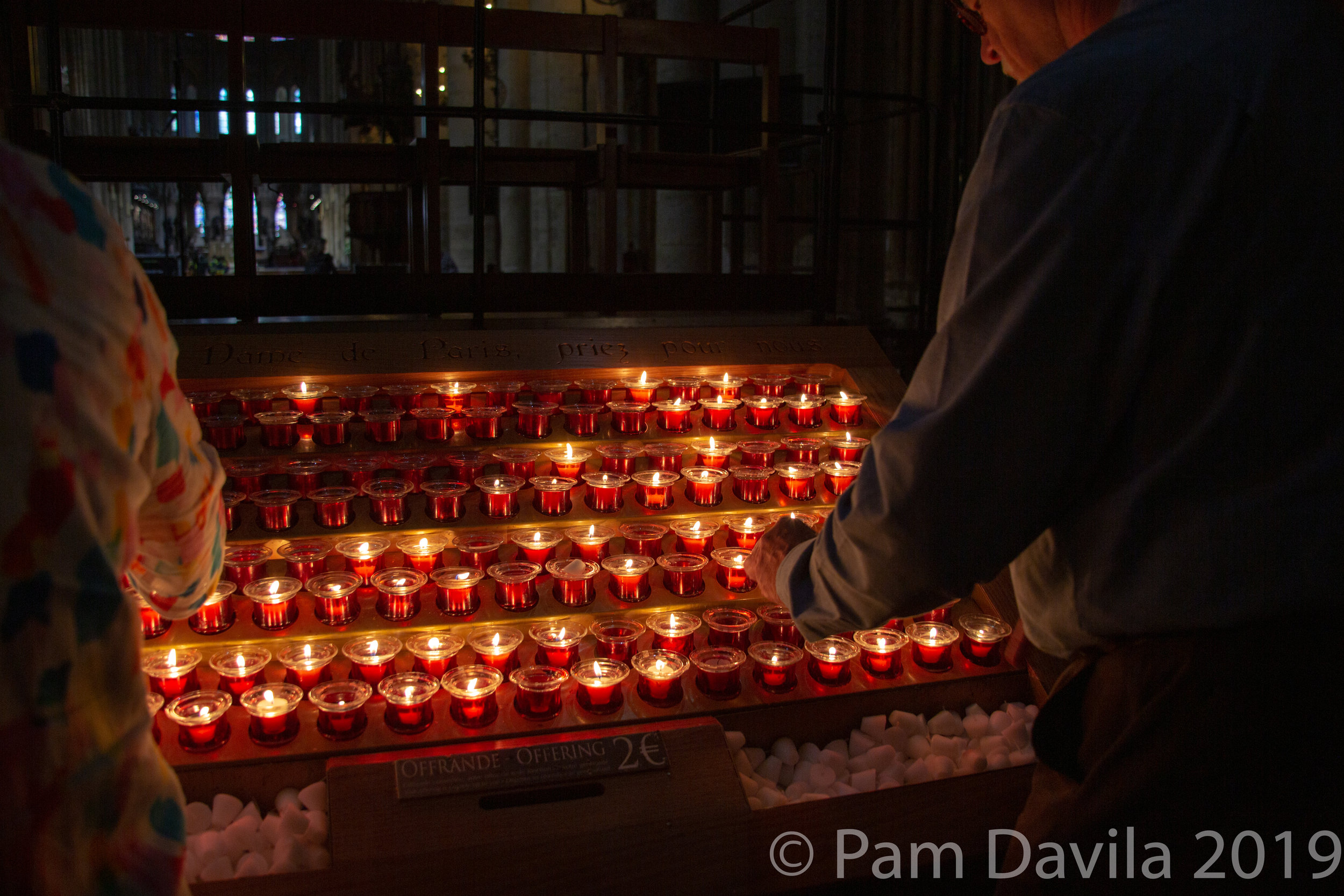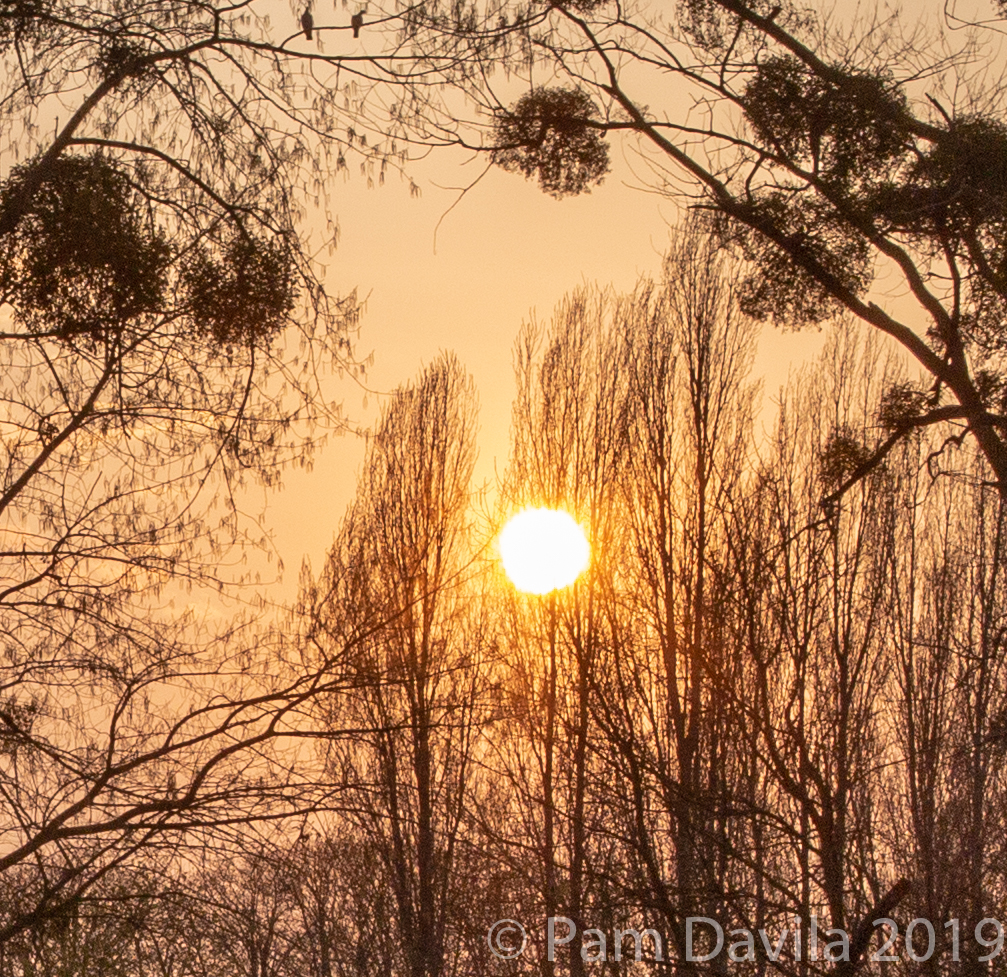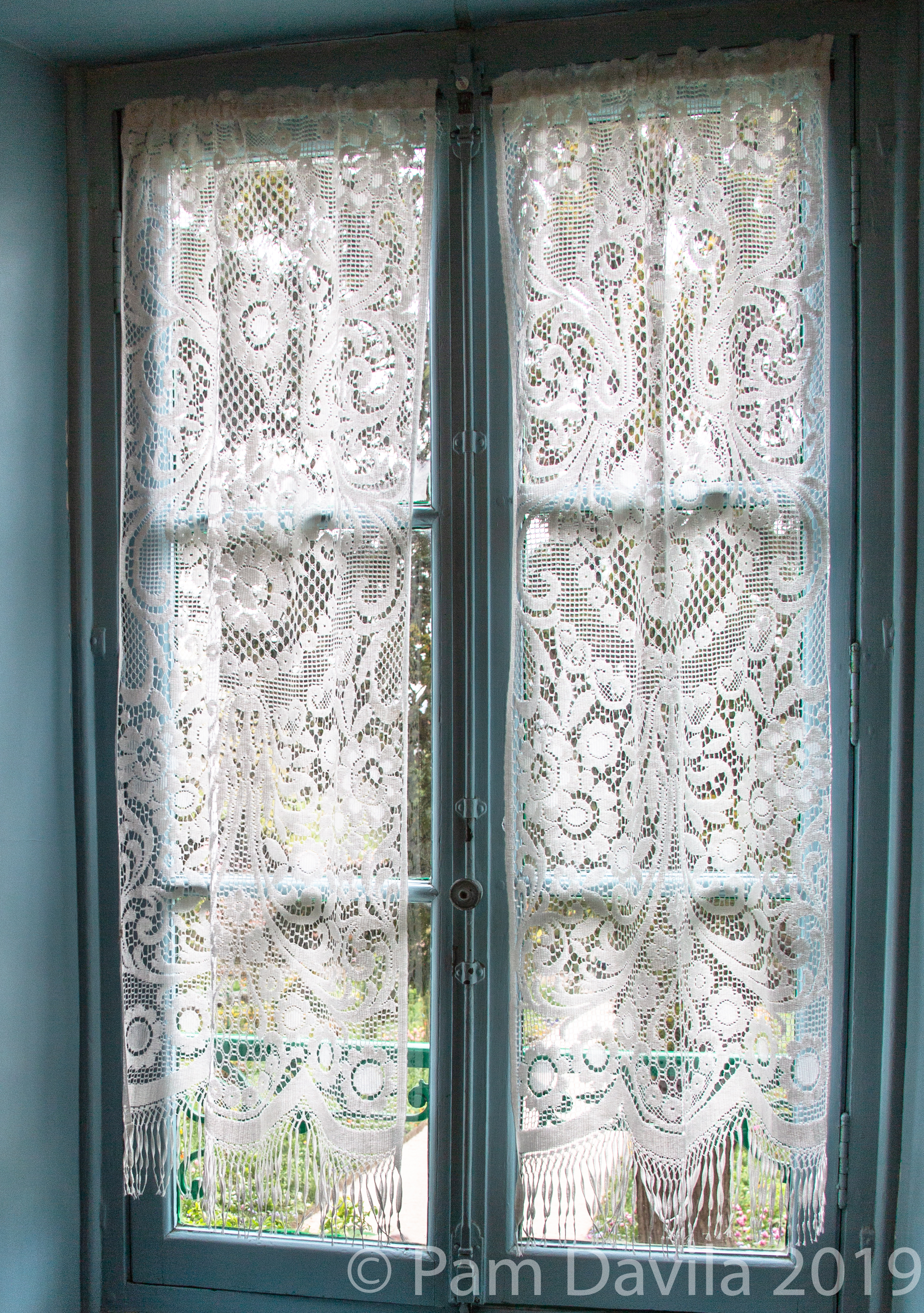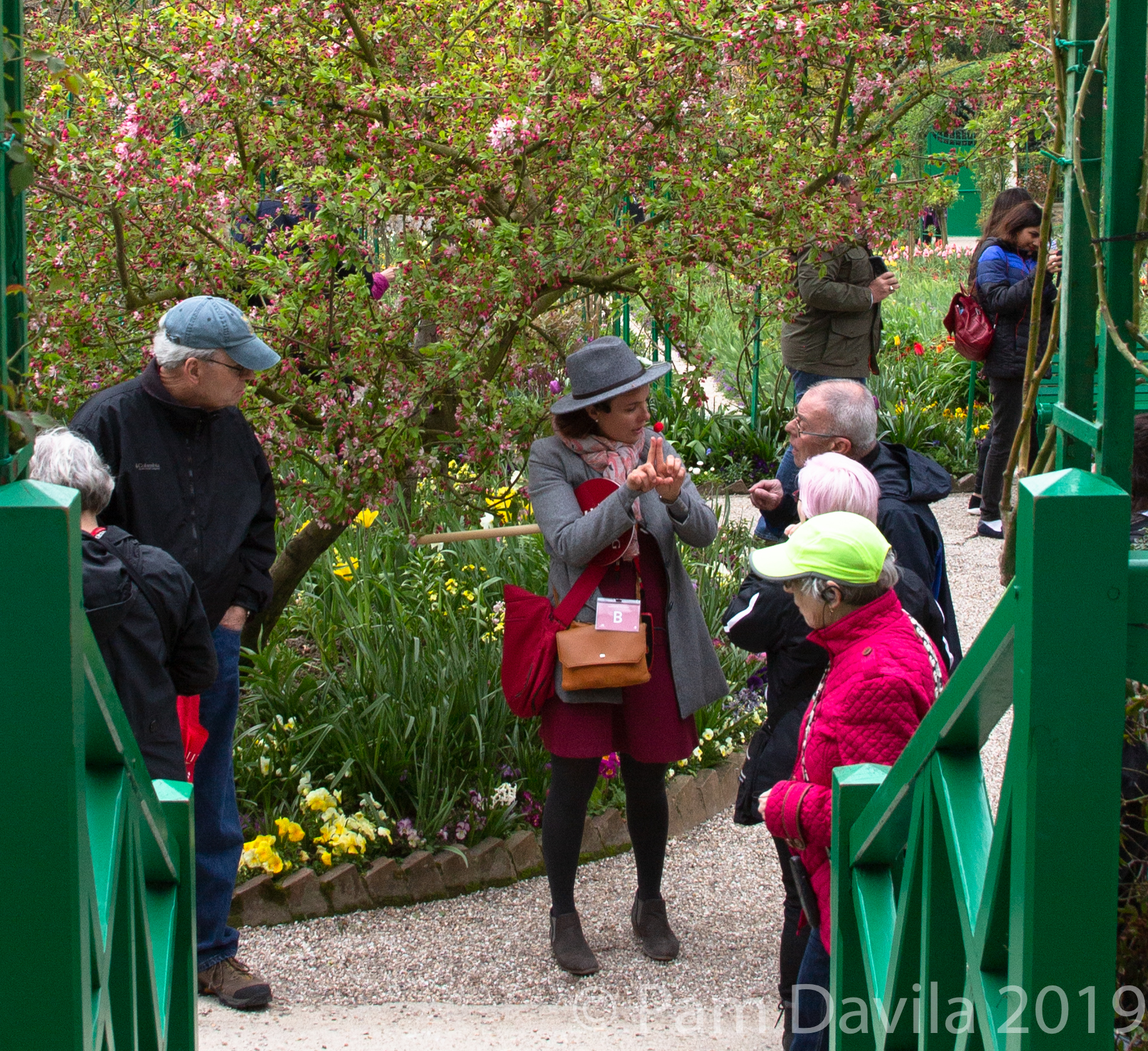Joe and I took a trip to France to join a Viking river cruise along the Seine River from Le Pecq to Rouen and back with different stops on the return leg of the cruise. We joined some old friends for this Viking river cruise and met some great new friends. The cruise started in Le Pecq on March 31 and ended back in Le Pecq on April 6. We really enjoyed the beautiful and quiet peaceful cruise along the river, the great food, company, and service and the wonderful daily excursions to various points and places of interest along the way.
This blog is more like a travelogue with galleries by date of the journey. Joe brought his Olympus Pen-F camera on the trip with a new wide angle f/1.8 lens (and others). The pictures from his camera were fantastic, so I have included some of his photos in the galleries as well. They are watermarked with his initials, JMD. My camera is a Canon EOS Mark III and I brought a couple of lenses along as well. We had a lot of fun taking pictures together just like we used to. I had trouble narrowing down the photo list, so please excuse the large number of photographs, but I do hope you enjoy them!
Sunday, March 31, 2019 - After a long overnight, transatlantic flight, we arrived at Charles de Gaulle airport in France in the morning. A driver met us and others at the airport and drove us to the Viking Rolf longboat (named after the famous Viking, Rollo) which was tied off in the port of Le Pecq west of Paris. It was a beautiful ship with a Scandinavian interior design, very simple, but elegant. On board, we joined our crew and met some new friends, then enjoyed an embarkation lunch, and went on a walking tour of the city of Saint-Germaine-en-Laye, a beautiful, wealthy suburb on the hill that overlooks the Seine and the port of Le Pecq.










Monday, April 1, 2019 - Joe and I have both been to Paris before for work related activities before our retirements, so forgive me if I give the city only a cursory mention in this blog. On this second day of the trip, I joined the panoramic Paris bus tour, but we stopped at the Notre-Dame Cathedral and spent a couple of hours walking in the city and having lunch before returning to the boat. We cast off for Vernon in the evening around 7 pm. Check out my Sunset on the Seine series in the slideshow below - I just love these photos! Sorry, but I had to put all 4 in the slideshow.






































Tuesday, April 2, 2019 - After cruising on the river throughout the night, we docked at Vernon around 5 am. It was a beautiful morning and we left the boat to see the city. After lunch, we left for Giverny to tour the house and gardens of French impressionist painter, Claude Monet. I was so excited to see the beautiful gardens and the famous lily pond (but no lilies this time of year).






































Wednesday, April 3, 2019 - We cast off and left Vernon for Rouen at about 5:30 am. Our morning cruise began with a beautiful sunrise over the Seine River as taken from the boat. The early morning “golden hour” light made the sunlit views from our cabin window so spectacular! The boat passed through the lock at Poses-Amfreville, the last lock on the river. We enjoyed lunch and the river sights as we continued our cruise down the river, and docked at Rouen around 1:00 pm. At 1:45 pm, we began a guided walking tour of the city.
The Rouen Cathedral was one of the special points of interest for me during our walking tour. The dukes of Normandy were traditionally crowned here and several are buried in the cathedral. The Cathedral contains the tomb of Rollo, the founder and first ruler in what became known as Normandy. Rollo’s son was William Longsword and Rollo’s grandson was Richard I, or Richard the Lionheart. William Longsword is also buried in the cathedral. And the tomb containing the remains of the heart of Richard the Lionheart is also housed in the Cathedral. In his family tree, Joe has traced his ancestry along one line back to Richard the Lionheart and he was particularly excited about seeing the tombs. Richard I (1157-1199) is historically controversial, but is remembered for being a chivalrous English king, for battling Saladin during the Crusades, and for rebelling against his father, Henry II. He also built the Chateau Gaillard in Petit Andely, which we will see at a later stopping point in our cruise.
We began our tour of the Cathedral by entering through the Librarians Portal on the north side of the building. Before passing through the door, we noticed the stone medallions carved into the walls on both sides of the entrance. The medallions showed an endless variety of unique creatures, monsters, and animals. Our guide pointed out the degrading effects of the air pollution on the stone and also how a rigorous cleaning process had ruined some of the art work.
Once inside the Cathedral, we discovered that our guide was very knowledgeable about the church and the various stained glass windows and their features and history. Some of the windows in the Cathedral are still decorated with stained glass from the 13th century, famous because of a special cobalt blue color, known as "the blue from Chartres". We exited the Cathedral from one of the portals on the west side of the building, and were able to view the famous west facade from the street.
Our tour ended at the Place du Vieux-Marche, the spot where Joan of Arc was burned at the stake. A tragic ending for the now patron saint of France. The Church of Saint Joan of Arc is a Catholic church in the city center of Rouen. The stained glass windows in this church come from the 16th century Church of Saint Vincent, whose ruins are located close by.
The city of Rouen was one of the highlights of the trip; it was beautiful and intriquing, full of history, and we only touched upon the numerous historical sights and places of interest. After visiting the Church of Joan of Arc, we briskly walked back to the boat in a light rain. The rain had held out throughout most of the day and we were relieved that we had been able to see so much in the short amount of time available.






















































Thursday, April 4, 2019 - On this day, from 8 am to about 6:30 pm, we had a full day shore excursion to tour the beaches of Normandy where the WWII Allied troops landed on D-Day on June 6, 1944. D-Day saw the landing of British, American, and Canadian troops, together with the French. In the days that followed, Allied divisions and brigades of other nationalities also arrived in Normandy with soldiers from Holland, Poland, Czechoslovakia, Belgium and Luxembourg joining the forces to liberate France and the rest of Europe. Denmark, Norway, and Greece also contributed.
The Allies landed on five different beaches: from west to east they were code-named Utah, Omaha, Sword, Gold, and Juno. The Americans first landed on the Utah and Omaha beaches , the British and French Commandos first landed on Sword, the British and French soldiers first landed on Gold Beach, and the Canadians first landed on Juno.
Our first stop was at Arromanches, a small village located on Gold Beach, where a makeshift Mulberry harbor was built by the Allies. We visited the small D-Day Landing Museum called the Musee de Embarqment and watched a film to learn and appreciate how the makeshift harbor was built . In just 12 days, Allied forces positioned massive concrete platforms and built roads nearly a mile long, floating on pontoons. Within six more days, more than 300,000 troops, with all their equipment, had established a beachhead here. Remnants of the manmade harbor are still visible in the water.
Next we drove about 10 miles west of Arromanches to the Longues-sur-Mer Gun Battery, where we were able to view four German bunkers and the only original coastal artillery remaining in place in the D-Day region. We stopped for lunch at the Omaha Beach Golf Club. Our next stop was the American Cemetery and Memorial at Colleville-sur-Mer, located atop a bluff overlooking Omaha Beach, where the greatest number of American casualties occured on that fateful day. The cemetery is the final resting place for nearly 10,000 American soldiers. We walked among the white marble crosses and read the names and dates and places of birth and dates of death of the many Americans who gave their lives to free Europe. It was a cold day on top that bluff, very sobering, and very emotional.
After our tour of the cemetery, we drove down to the village of St. Laurent-sur-mer and then along the beachfront to the Les Braves memorial sculpture built in tribute to the Allies that landed on Omaha Beach. The sculpture is actually located in Vierville-sur-Mer on Omaha beach itself at the junction of the dog red and easy green sectors. The following words were written by the creator of the sculpture, Anilore Banon, and they explain the three segments of the sculpture that are visible. I felt they were inspiring and copied them here.
“The wings of hope
So that the spirit which carried these men on June 6th 1944 continues to inspire us, reminding us that together it is always possible to change the future.
Rise, Freedom!
So that the example of those who rose against barbarity, helps us remain standing strong against all forms of inhumanity.
The Wings of Fraternity
So that this surge of brotherhood always reminds us of our responsibility towards others as well as ourselves.
On June 6th 1944 these men were more than soldiers, they were our brothers.”
As I walked across the vast stretch of sand at low tide, I tried to envision the soldiers struggling to get to a safe place and remembered how so many did not make it. I also remembered that our native French tour guide on the bus going into Paris on an earlier excursion had earnestly proclaimed (perhaps a bit tongue in cheek), “We love Americans! Thank you so much for liberating France! You are our friends forever!” The price we have paid for liberty has been great, but I am eternally grateful for all of those who gave their lives so that I may stand free in this place.























Friday, April 5, 2019 - At 7 am Friday morning, we cast off from the dock at Rouen and headed back upriver toward Paris. Around 1 pm in the afternoon, the Viking Rolf docked at the port of Les Andelys. which consists of two cities, Grand Andely and Petit Andely. During World War II, about 80% of the city of Grand Andely was demolished during bombing raids, and we did not visit this city. But the small village of Petit Andely was built to accommodate the many masons and laborers who toiled on the Château Gaillard, a ruined medieval castle. The castle is located atop a steep hill that rises about 300 ft above the small village and overlooks the River Seine. Richard the Lionheart, who was King of England and feudal Duke of Normandy, began construction of the Château in 1196 and it was completed in about 2 years. The castle consisted of three enclosures separated by dry moats, with a keep in the inner enclosure. It was a feat of military architecture and design and was built to defend Normany from an invasion along the river. The castle ruins are now listed as a French historical monument.
The views from the Chateau were spectacular! Our day was a bit cloudy and the light was afternoon light, so photography was not optimum, but still plenty of oppurtunities for great photos. We spent about 3 hours hiking around the ruins and touring the city, then returned to the boat.
We departed Les Andelys for Manes-la-Jolie after 6 pm and docked in Manes-la-Jolie around 11:45 pm.















Saturday, April 6, 2019 - On this morning we left the boat for a half day excursion to the Palace of Versailles. Our group toured the Gardens first. They were beautiful, but not many flowers in bloom since it was early spring and the fountains were not turned on while we were there. Still, the vastness of the garden design was spectacular and the views were awesome. We went into the Palace after waiting with lots of other groups outside the group entrance. Somehow we managed to get in at our specified time slot, even though we had heard about significant delays. The first view we had was of the Chapel and we continued on to see the various rooms. You could spend a lot of time inside this place, but it was difficult to take a leisurely tour since there were so many groups inside. I loved the Palace but learned a lot more about the art and sculpture and history after working on this blog and spending some time online.
We returned to the boat around 1 pm and enjoyed a late lunch. The boat left the Manes-la-Jolie dock around 2 pm. We returned to the port of Le Pecq. This had been our starting point and was our final destination on the cruise. Lots of memories and lots of fun! We returned to the United States the following day.
























